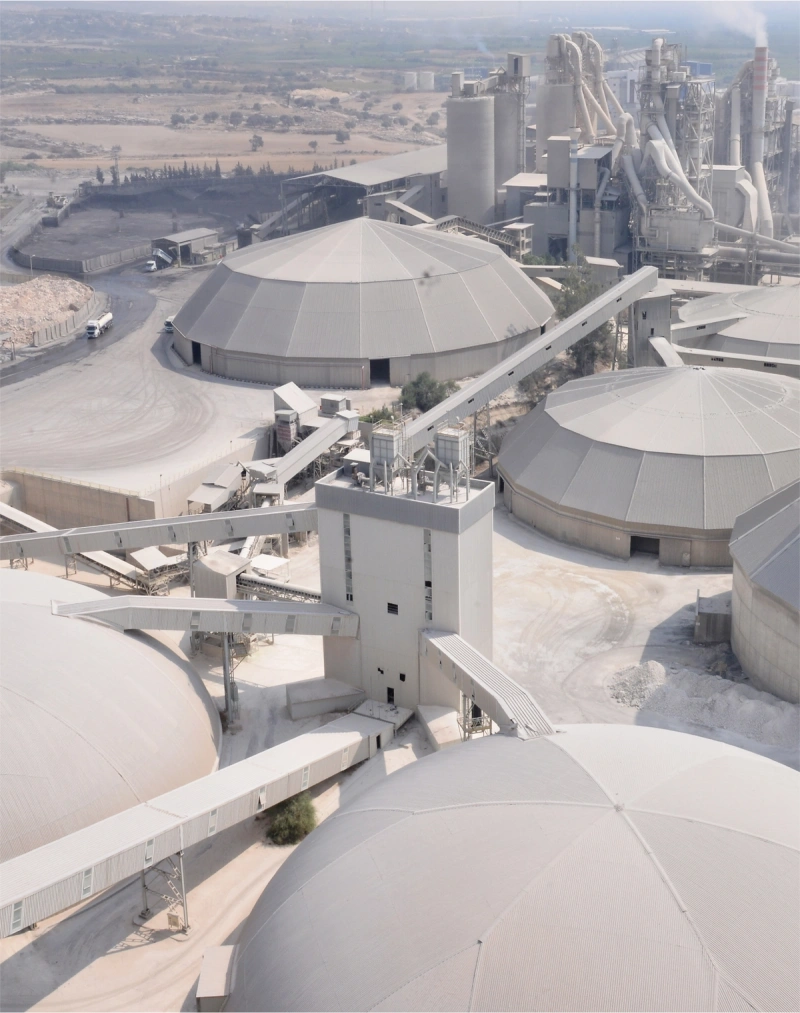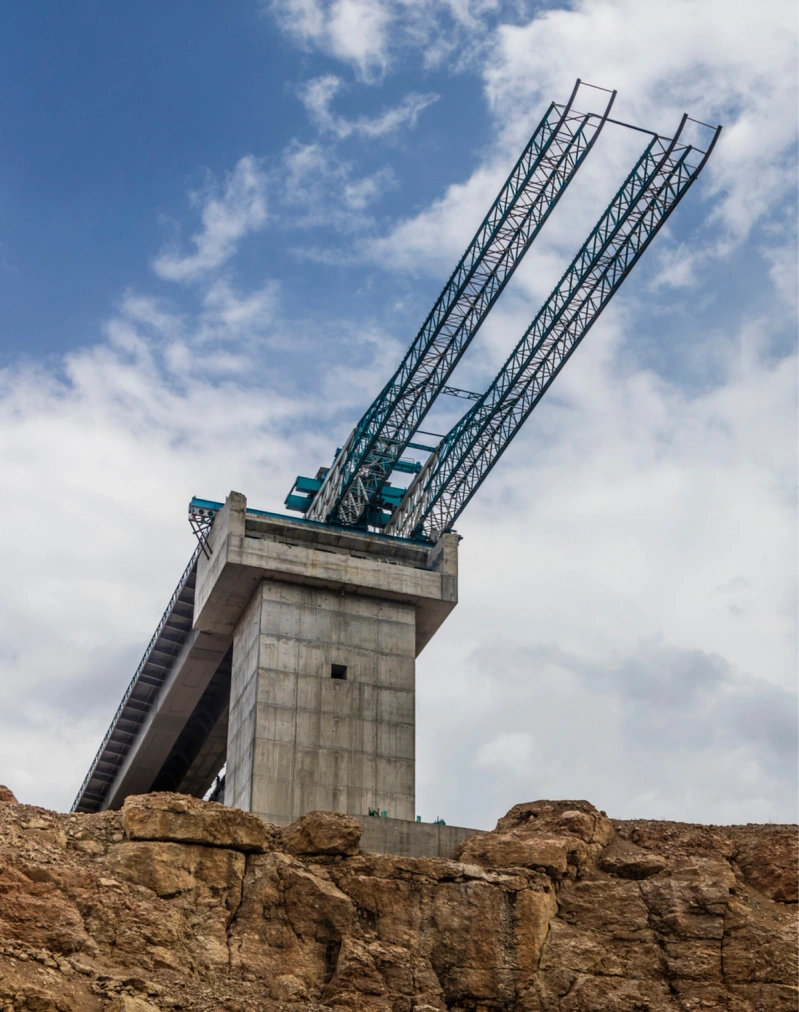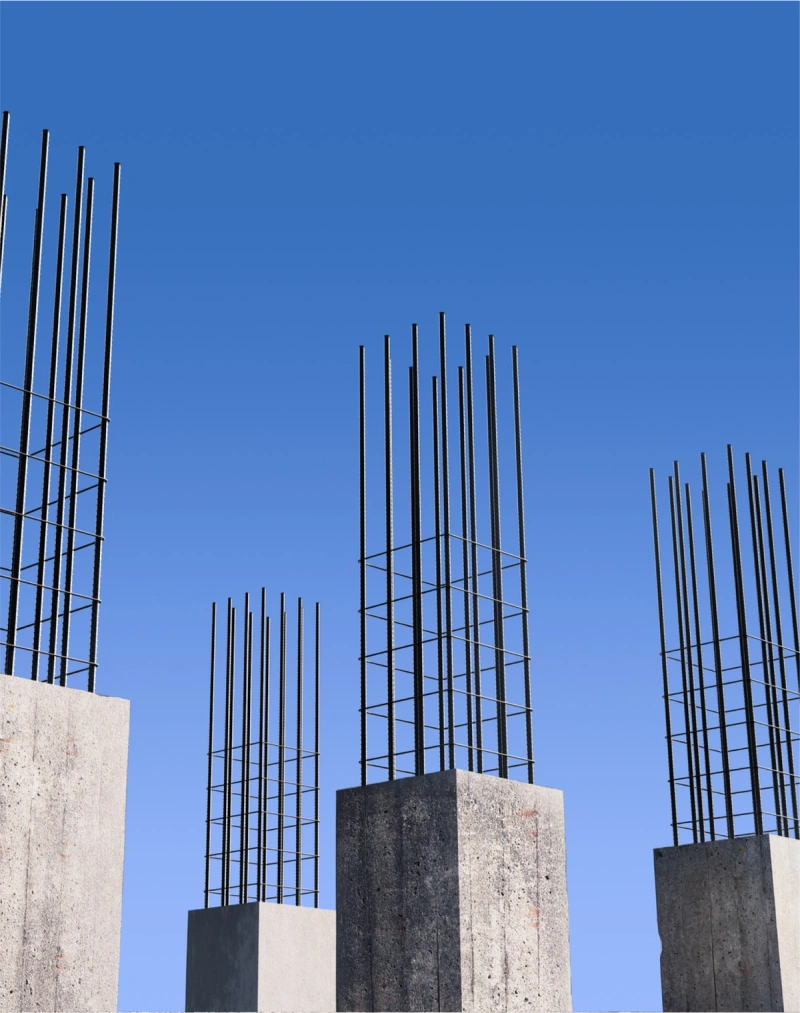Making Things Better
The manufacturing
Grand Challenge
if you only have brain space for three things
Cement and steel are the most widely used materials in the world, responsible for 10% of global greenhouse gas (GHG) emissions. But they’re actually among the lowest emissions-intensive building materials that we have today — we just use them at incredibly high volumes.
Given the challenges of replacing these materials — which are ubiquitous and have unique advantages — our main focus should be on making improvements to their process and supply chain, while also developing high performance substitutes where possible.
Going forward, there’s a lot of opportunity for technological innovation in this sector. But we also need to aggressively incentivize the use of clean steel and cement through public procurement, tax credits, demo project funding, and other methods. More funding and confidence in promising technologies can help move the needle on this notoriously hard-to-decarbonize industry.
Steel and Cement
The Hardest Decarbonization Challenge (Pun Intended)
1
1
So far, this report has avoided rank-ordering our carbon problems — because that’s pretty much impossible. What’s harder to decarbonize: the world’s electricity grid or our transportation sector? Or what about our food supply? There’s no real consensus, with one salient exception: manufacturing.
That shouldn’t scare us off, though. If anything, it should motivate us. Because in the face of the toughest challenge, we’ve already started making inroads.

A worker at a steel plant
Today, 29% of all GHG emissions come from how we make things
.
And this may be the most difficult chunk of carbon to get rid of.
Why? Because of the two most commonly manufactured materials on Earth: steel and cement . (How common are we talking? Concrete, the mixture of cement and water, is the second-most consumed material on the planet, after water.)

Temple Of Pallas, Rome
The majority of cement and steel emissions comes from the process emissions and high-heat approaches that create these materials themselves. Cement is made by heating up calcium carbonate to nearly 1,500°C, and steel is formed by reducing iron ore in massive blast furnaces that can get as hot as 2300° C. Most of these operations are not currently electrified.
That’s partly because these processes far predate electricity; they have been honed over thousands of years. Cement dates back to the Romans, and people were refining steel at the same time wooly mammoths walked the earth. Countless generations have perfected the science of making these materials cheaply, abundantly, and relatively efficiently.
Both cement and steel are, pound for pound, among the lowest carbon dioxide (CO₂) emitters among common building materials. We just use them in such enormous quantities that they end up having this outsized impact on the climate.
How can we find a cheaper, greener option for materials that are already cheap, that are already low-carbon, and that are so abundant that they literally compose the foundation of our world?
An important first step would be “electrifying everything” that we are able to as we outlined in the previous chapter: innovative electrification technologies will be required to cut down on the energy footprint of cement and steel manufacturing. Then, with the innovative technologies at our disposal, and sufficient investments in them, we can improve nearly every step of both these processes, from cleaner component parts of cement to the way iron ore is reduced into steel. For the final stretch, we need to harness public policy, regulations, and behavioral change to actually increase uptake of these innovations in industries that are often set in their ways.
Concrete Jungle
Reinventing
Cement
2
2

A cement mixing truck
Today, the global cement market is worth nearly $900 billion. About 60% of cement emissions come from the “process,” whereby carbon dioxide is released from limestone to form calcium oxide. The other 40% come from energy, or the heat that makes things like mining and limestone processing possible.
It’s hard to displace cement, because most alternatives, like clay bricks, have higher emissions per unit, cost more, or don't have the same broad functionality.
So how should we think about decarbonizing cement?

Workers mixing cement
We can start with different approaches or chemistries to make cement.
The vast majority of cement used today is “Portland cement,” a mixture of limestone, clay, and other minerals typically burned in a kiln, a recipe first developed in the 19th century. But innovators are finding ways to make cement that do not emit so much CO₂. We already have some promising options.
For example, there’s Brimstone , a startup that has developed a process to make Portland Cement in a new way – from calcium silicate rocks, which have no embedded CO₂ , instead of the traditional limestone. These rocks fit almost seamlessly into the existing cement supply chain, creating just one extra step.
Brimstone is helping reduce emissions in cement production

Exterior of a building made of concrete
A second approach is to stretch cement further. In traditional formulas, cement constitutes about 10% to 15% of concrete. But what if we could get that down to five percent? Or even lower?
Turns out, that’s eminently possible. We just have to add other ingredients known as “supplementary cementitious materials,” or SCMs. We already have several SCMs that can help reduce the amount of clinker (the stony pieces left behind after coal is burned) in cement: fly ash, slag cement, silica fume. One company working in this space is Terra CO2 , which makes SCMs from widely available silicate-based raw materials found near existing aggregate mines.
Another case study is Ecocem , a company in Breakthrough’s investment portfolio in Europe, which has invented ingenious new cement formulations. Many are already being used in Europe's largest infrastructure projects, including the construction of the Olympic Village for next summer's games in Paris. Ecocem's latest technology, “ACT”, is globally scalable and can reduce cement's carbon footprint by 70%, replacing the bulk of the clinker with widely available SCMs and fillers.
Conveniently, all these stretching measures are also cost-saving measures, because cement is the most expensive component of concrete. One team working on this problem from an entirely different angle is a Breakthrough Energy Fellows project called Chement , which has pioneered a new room-temperature electrochemical process that provides an extremely energy efficient way to produce cement with renewable electricity.

An illustration of a cement plant
Capture The Carbon
Another potential intervention is carbon capture and storage, or CCS. Since cement is already so cheap per unit, the Green Premium here is pretty high, and a CCS surcharge can often mean almost doubling the price of cement . And retrofitting existing plants may not make great economic sense, because a new CCS plant costs almost as much as a cement plant — but it’s a good option to have on hand for new construction, especially in emerging markets.
None of these piecemeal solutions are sufficient in and of themselves, because the industry is already so large and established, and these interventions all take a long time
to implement.
On the flip side, many of them work well together, and we should consider stacking them wherever possible.
A New Look
Green
Steel
3
3

A steel furnace
3000 years after we started making steel, this strong and cheap alloy of iron and carbon represents over 90% of all the metal used in the world. It’s also the single most emissive manufactured good on earth — responsible for roughly 2.5 gigatons of carbon dioxide (CO₂) emissions each year, excluding the emissions from generating electricity used in steel production (those are included in the electricity section).
That’s about five percent of all global greenhouse gas (GHG) emissions.
Carbon isn’t just a source of energy in steelmaking, but also the most common reducing agent that helps rip the oxygen off naturally-occurring iron ore to make steel. 70% of today’s steel is made in blast furnaces, a technology invented in the 18th century to reduce steel using huge quantities of carbon.
Decarbonizing steel is hard, due to the metal’s extremely broad functionality, but we do have two broad paths to try and do so. The first is by decarbonizing the primary steelmaking process itself, and the second is by increasing the quality and quantity of recycled secondary steel.
Direct Reduced Iron
The first pathway centers on Direct Reduced Iron, or DRI, which arose from the discovery that you don’t have to melt iron ore to turn it into iron; if you just keep it hot enough with certain fuels — like natural gas, coal, hydrogen, or biofuels — you're left with the same metal. Today’s DRI uses natural gas, so there is still a CO₂ byproduct — albeit less of it than with traditional steel — but, in the future, DRI using green hydrogen can have a CO₂ footprint of steel as low as zero. (That being said, hydrogen makes the reducing reaction endothermic, which requires more energy on the front end.)
So why don't we just use DRI for everything? For starters, alternative reducing agents like hydrogen also cost far more than natural gas; green hydrogen can be over five times the price of the latter. So in the short run, hydrogen DRI simply costs more than ordinary steel. But as we drive down the cost of hydrogen and alternative fuels, we can expect wider applications.
DRI also typically leaves behind other metals like aluminum and silicon that need to be melted again, so you can only use it on high-grade ores without too many contaminants. It’s currently only about six percent of the global iron supply — and is becoming even more expensive and rare — so we need a hydrogen solution that can work on a wider range of ores. One Breakthrough Energy Fellows project, Hertha Metals,
is working on this very challenge. Hertha is developing an iron and steel manufacturing
technology that converts any grade of iron ore into ultra-low carbon footprint iron and steel through a hydrogen-electric approach.
Recycling secondary steel
The second major pathway for driving down steel emissions is recycling secondary steel — essentially, remelting and reshaping it. Secondary steel already accounts for about 24% of global steel production and is the least energy- and emissions-intensive process we have for making steel today. The major constraint is that, over time, recycled steel accumulates impurities again — which is why recycled steel has fewer applications over time, like in the automotive industry, which mandates high-purity steel .
Several companies today are exploring better ways to separate recycled iron from contaminants, so we can expand the secondary steel market beyond the place where it has plateaued in recent years.
Further down the road, carbon capture, utilization, and storage (CCUS) can also help decrease the energy needed to manufacture steel. To date, we haven't shown that we can achieve a sufficiently high rate of capture (90% or more) to make it worthwhile, and, like with cement, it would likely come at a high price. But it’s something to keep in our arsenal for a time when we’ve maximized the other solutions at hand.
Beyond Innovation
Policy & Consumer Choice
4
4
These are all incredible, cutting-edge technologies, many of which were unimaginable just a decade ago. But technology isn’t the whole story.

Bridge under construction
Imagine, for instance, that you’re a contractor. You’re putting in your proposal for a new bridge that has to be built. What do you choose? A design that uses the normal recipe for cement that you’ve used your entire career — the formula that local building regulations say is approved?
Or do you propose using a different kind of carbon-free cement that, while just as strong, isn’t specifically approved by the government, meaning if something breaks, it’s on you?

A building construction site with steel girders
We need to incentivize that aggressively, through public policy, regulation, public procurement, and education. Officials at every level of government should expand the regulatory incentives and support for the use of green manufacturing alternatives.
Public procurement — the process by which public authorities purchase goods and services from companies — can play a huge role in the early movement of markets.
Getting national and state governments to be among the first major customers for clean alternatives to cement and steel can radically disrupt these markets over time.
When it comes to building codes, we should move from prescriptive (i.e. conservative) standards to performance-based standards that encourage innovation.
Both functional and regulatory barriers have prevented the wider uptake of innovations to ordinary Portland cement. Portland cement has exactly the right pH to prevent the corrosion of reinforcing steel, which is the main reason concrete structures fail; this is one of its hardest functions to replicate. What’s more, there’s huge economic inertia towards these alternatives, because of the sunk costs — nearly a trillion dollars — in old-school Portland cement.
Something that can help move the needle on uptake and regulation is more funding to promising technologies to demonstrate its use at scale, which can motivate regulatory changes and create a virtuous cycle. More broadly, financial incentives like demo project funding and tax credits can help overcome the Green Premium for producers. One great example of this is the Bipartisan Infrastructure Law (BIL)
passed in the United States in 2021, which earmarked over $500 billion for precisely such purposes.

Unfinished cement and steel structures
Due to the complex value chains of steel and cement, we need leadership from industry players who are willing to scale technologies. This isn’t like electric vehicles, where manufacturers can sell directly to consumers who are open to paying a Green Premium. A new supplementary cementitious material, like TerraCO2 , sells its product to a concrete producer, who sells it to a builder, who may then interface with a consumer, who may or may not want to shoulder the largely-invisible Green Premium.
That’s why it’s crucial that establishment and emerging companies alike commit to scaling new technologies, which has been relatively slow to date, particularly in cement.
There’s no silver — or steel — bullet when it comes to solving the emissions puzzle in manufacturing. But the sheer scale of these industries promises that these solutions, if we make sincere efforts to implement them, will be well worth it.
How We Grow Things:
An Update on
Agriculture
If You Only Have Brain Space for Three Things
Food demand will only increase as our population grows. We need to find ways to feed the world without contributing to emissions. That means finding better ways to fertilize plants, raise livestock, conserve water, and reduce food waste.
Methane from cows and livestock is the dominant driver of agriculture emissions. By 2050, there could be an additional 500 million cows roaming the planet. Just in the last few years, numerous companies have been founded to tackle enteric emissions. New technologies like cow vaccines and methane-reducing feeds could help significantly.
Going forward, the challenges here are as much geographical and cultural as they are technological. But while there’s no one-size-fits-all solution, it’s clear we need more public R&D funding so we can continue to develop better ways to feed the world without contributing to emissions.
Scroll to navigate to
next section
Click to navigate to
next section
